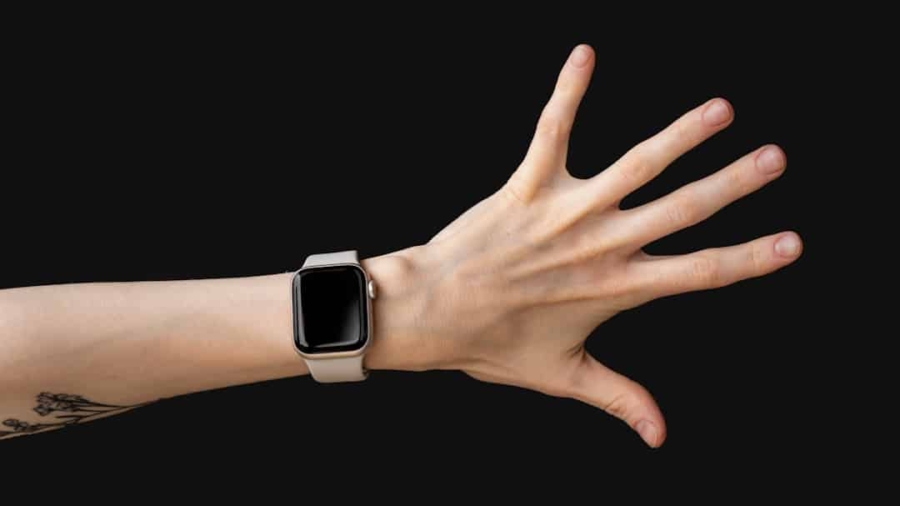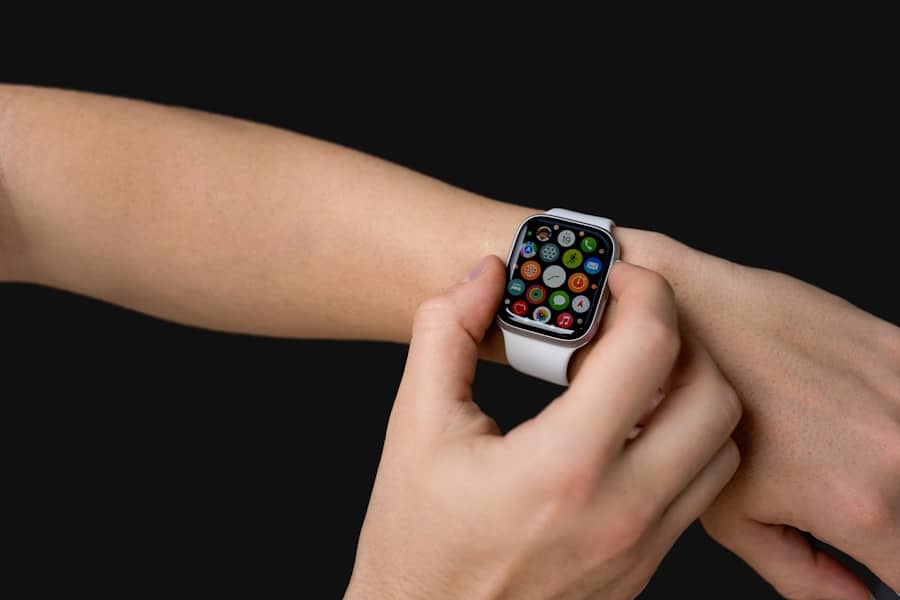The advent of wearable technology has revolutionized various sectors, from fitness to healthcare, and now it is making significant strides in the realm of space travel. As humanity embarks on increasingly ambitious missions beyond Earth, the need for effective health monitoring systems becomes paramount. Wearable devices, which can track a multitude of physiological parameters in real-time, are emerging as essential tools for astronauts.
These devices not only provide critical data about the health and well-being of space travelers but also enhance their ability to perform complex tasks in a challenging environment. The integration of wearables into space missions represents a fusion of cutting-edge technology and human physiology, aimed at ensuring the safety and efficiency of astronauts during their journeys. The significance of wearables in space travel extends beyond mere convenience; they are integral to understanding how the human body reacts to the unique conditions of space.
The microgravity environment, coupled with cosmic radiation and isolation, poses numerous risks to astronauts’ health. Wearable technology offers a proactive approach to health management, allowing for continuous monitoring and immediate response to any anomalies. As space agencies like NASA and private companies such as SpaceX prepare for long-duration missions to Mars and beyond, the role of wearables in safeguarding astronaut health is becoming increasingly critical.
Key Takeaways
- Wearables play a crucial role in monitoring the health of space travelers, providing real-time data and insights.
- Monitoring health in space is important for ensuring the well-being of astronauts and detecting any potential health issues early on.
- Challenges of monitoring health in space include limited resources, confined spaces, and the need for accurate and reliable data collection.
- Wearables in space travel help track vital signs, sleep patterns, exercise, and overall health, providing valuable information for astronauts and mission control.
- Types of wearables used in space travel include smartwatches, fitness trackers, biometric shirts, and medical monitoring devices, all designed for the unique challenges of space exploration.
The Importance of Monitoring Health in Space
Monitoring health in space is not just a matter of comfort; it is a fundamental requirement for mission success. The human body undergoes significant changes in microgravity, including muscle atrophy, bone density loss, and alterations in cardiovascular function. These physiological changes can lead to serious health issues if not monitored and managed effectively.
For instance, studies have shown that astronauts can lose up to 20% of their muscle mass during a six-month mission aboard the International Space Station (ISS). This loss can impair their physical capabilities upon return to Earth, making it essential to track muscle health continuously. Moreover, psychological well-being is equally important during space missions.
The isolation and confinement experienced by astronauts can lead to stress, anxiety, and depression. Monitoring mental health indicators through wearables can provide valuable insights into an astronaut’s emotional state, allowing for timely interventions. By understanding both the physical and psychological aspects of health, space agencies can create comprehensive support systems that address the multifaceted challenges faced by astronauts during their missions.
The Challenges of Monitoring Health in Space
Despite the advancements in technology, monitoring health in space presents unique challenges that must be addressed. One of the primary obstacles is the microgravity environment itself, which can affect the accuracy and reliability of traditional health monitoring devices. For example, blood pressure measurements can be influenced by fluid shifts in microgravity, leading to potential misinterpretations of an astronaut’s cardiovascular health.
This necessitates the development of specialized wearables that can adapt to the conditions of space while providing accurate data. Another significant challenge is the limited resources available on spacecraft. Space missions often involve strict weight and power constraints, making it difficult to deploy large or power-hungry monitoring systems.
Wearable devices must therefore be lightweight, energy-efficient, and capable of operating autonomously for extended periods. Additionally, the harsh conditions of space—such as radiation exposure and temperature fluctuations—can impact the durability and functionality of wearable technology. Engineers and scientists must collaborate closely to design wearables that can withstand these extreme environments while maintaining high performance.
The Role of Wearables in Monitoring Health for Space Travelers
Wearable technology plays a pivotal role in monitoring astronaut health by providing real-time data that can inform medical decisions and enhance overall mission safety. These devices can track vital signs such as heart rate, respiratory rate, body temperature, and even blood oxygen levels. By continuously collecting this data, wearables enable healthcare professionals on Earth to monitor astronauts’ health remotely and intervene if necessary.
This capability is particularly crucial during long-duration missions where immediate medical assistance may not be available. Furthermore, wearables can facilitate personalized health management strategies tailored to individual astronauts’ needs. For instance, data collected from wearables can be analyzed to identify trends or anomalies in an astronaut’s health metrics over time.
This information can guide exercise regimens, dietary adjustments, and other lifestyle modifications aimed at mitigating the adverse effects of space travel on the body. By empowering astronauts with insights into their own health, wearables foster a proactive approach to wellness that is essential for sustaining performance during demanding missions.
Types of Wearables Used in Space Travel
A variety of wearable devices are currently being utilized or developed for use in space travel, each designed to address specific health monitoring needs. One prominent example is the use of smartwatches equipped with sensors that measure heart rate variability and physical activity levels. These devices allow astronauts to track their fitness levels and ensure they are engaging in sufficient exercise to counteract muscle atrophy and bone loss.
Another innovative wearable is the biosensor patch, which adheres to the skin and monitors various physiological parameters such as hydration levels, body temperature, and even biochemical markers like glucose or lactate. These patches provide continuous data without requiring frequent manual input from astronauts, making them ideal for long-duration missions where convenience is paramount. Additionally, advanced wearable technologies are being developed that incorporate artificial intelligence algorithms to analyze data patterns and predict potential health issues before they arise.
Benefits of Wearables in Space Travel
The benefits of integrating wearables into space travel are manifold and extend beyond mere health monitoring. One significant advantage is the enhancement of astronaut autonomy. With real-time access to their own health data, astronauts can make informed decisions about their well-being without relying solely on ground control.
This autonomy is particularly valuable during long missions when communication delays with Earth can hinder timely medical advice. Moreover, wearables contribute to improved mission efficiency by enabling astronauts to maintain optimal physical and mental performance levels.
This capability is essential for maintaining safety in high-stakes environments where errors can have serious consequences.
Future Developments in Wearables for Space Travel
As technology continues to evolve, the future of wearables in space travel holds exciting possibilities. One area of development is the integration of advanced biometric sensors capable of providing even more detailed insights into an astronaut’s health status. For instance, researchers are exploring the use of non-invasive sensors that can analyze sweat composition to monitor hydration levels and electrolyte balance in real-time.
Such innovations could significantly enhance an astronaut’s ability to manage their health proactively. Additionally, advancements in artificial intelligence and machine learning are expected to play a crucial role in the future of wearable technology for space travel. By leveraging vast amounts of health data collected from wearables, AI algorithms could identify patterns and correlations that human analysts might overlook.
This capability could lead to more accurate predictions regarding potential health issues and enable personalized interventions tailored to each astronaut’s unique physiological responses.
The Impact of Wearables on the Health of Space Travelers
The integration of wearable technology into space travel represents a transformative shift in how we approach astronaut health monitoring. By providing real-time data on vital signs and physiological parameters, wearables empower astronauts to take charge of their well-being while navigating the challenges posed by microgravity and isolation. As we look toward future missions beyond Earth, the continued development and refinement of these technologies will be essential for ensuring the safety and success of human exploration in space.
The impact of wearables on the health of space travelers cannot be overstated; they are not merely gadgets but vital tools that enhance our understanding of human physiology in extreme environments. As we venture further into the cosmos, the lessons learned from monitoring astronaut health through wearables will undoubtedly inform our approach to long-duration space missions and pave the way for sustainable human presence beyond our planet.
In a related article, the Samsung Galaxy S23 Review discusses the latest advancements in smartphone technology and how they can be utilized for health monitoring purposes.
With its advanced sensors and capabilities, this smartphone can provide valuable data to ensure the well-being of astronauts during long-duration space missions.
FAQs
What are wearables?
Wearables are electronic devices that can be worn on the body as accessories or implants. They are designed to perform a specific function, such as monitoring health and fitness.
How do wearables monitor health?
Wearables use sensors to track various health metrics, such as heart rate, blood pressure, temperature, and activity levels. They can also monitor sleep patterns and detect abnormal health conditions.
What is the role of wearables in monitoring health for space travelers?
Wearables play a crucial role in monitoring the health of space travelers by providing real-time data on their vital signs and overall well-being. This information is essential for ensuring the safety and health of astronauts during long-duration space missions.
What are the benefits of using wearables for monitoring health in space?
Wearables provide continuous and non-invasive monitoring of astronauts’ health, allowing for early detection of any health issues. They also enable remote monitoring by medical professionals on Earth, which can help in making timely interventions if needed.
What challenges are associated with using wearables for health monitoring in space?
Challenges include ensuring the accuracy and reliability of the data collected by wearables in the unique environment of space, as well as the need to minimize the size and weight of the devices to conserve space and resources on spacecraft.



